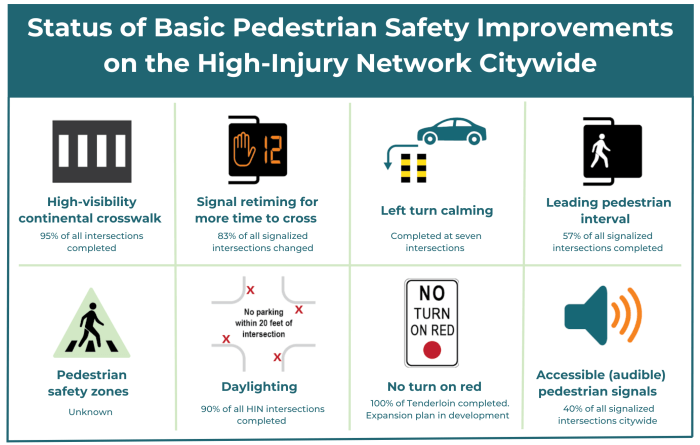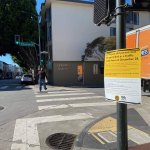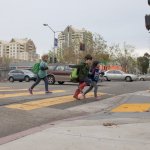New traffic safety report cards shine light on deadly streets – now we need you
Walk San Francisco just launched new versions of our district-by-district traffic safety report cards.
Using the latest data available, these report cards detail which streets have the highest rates of traffic crashes – and their status in terms of getting safety improvements.
Citywide, approximately 50 miles of designated ‘high-injury’ streets await life-saving fixes. Every district has high-injury streets, though Districts 3 (Chinatown, North Beach), 5 (Haight, Hayes Valley, Tenderloin), 6 (SOMA), 9 (Mission), and 10 (Bayview) have notably more.
We release these report cards at a moment when the City is falling behind in some of the most important commitments it made in its Vision Zero Action Strategy – especially related to fixing high-injury streets.
Last week, we delivered a letter detailing our concerns about Vision Zero progress to the SFMTA Board of Directors and SFMTA Director Tumlin. We need you to echo the urgency on safe streets in two ways.
1. Email your Supervisor today using our online tool. A big surge of messages from constituents can really get a Supervisor’s attention on an issue.
2. Make public comment (via phone or in-person) at the Tuesday, March 7 SFMTA Board meeting. Vision Zero is on the agenda – and we want to show that the public is paying attention and pushing for the City to get back on track. Sign up and we’ll share talking points and keep you posted on when to call in.
The report cards also show the status of key pedestrian safety improvements on all high-injury streets citywide.
For example, the City has now completed around 95% of high-visibility painted crosswalks, but left turn calming has yet to expand beyond seven intersections.

Creating the traffic safety report cards
Walk San Francisco first created traffic safety report cards in 2021. The new report cards include injury and fatality data through September 2022. Data is from TransBASE, which compiles SFDPH, SFMTA, and SFPD crash data.
I’m so grateful to our members for their support of the traffic safety report cards project. Special thanks to the Walk SF team members who made this project happen: Nick Giorgio, Brian Haagsman, Emily Huston, and Marta Lindsey.
If you see the value of projects like this in holding the City accountable on traffic safety, please consider a donation to Walk San Francisco.




